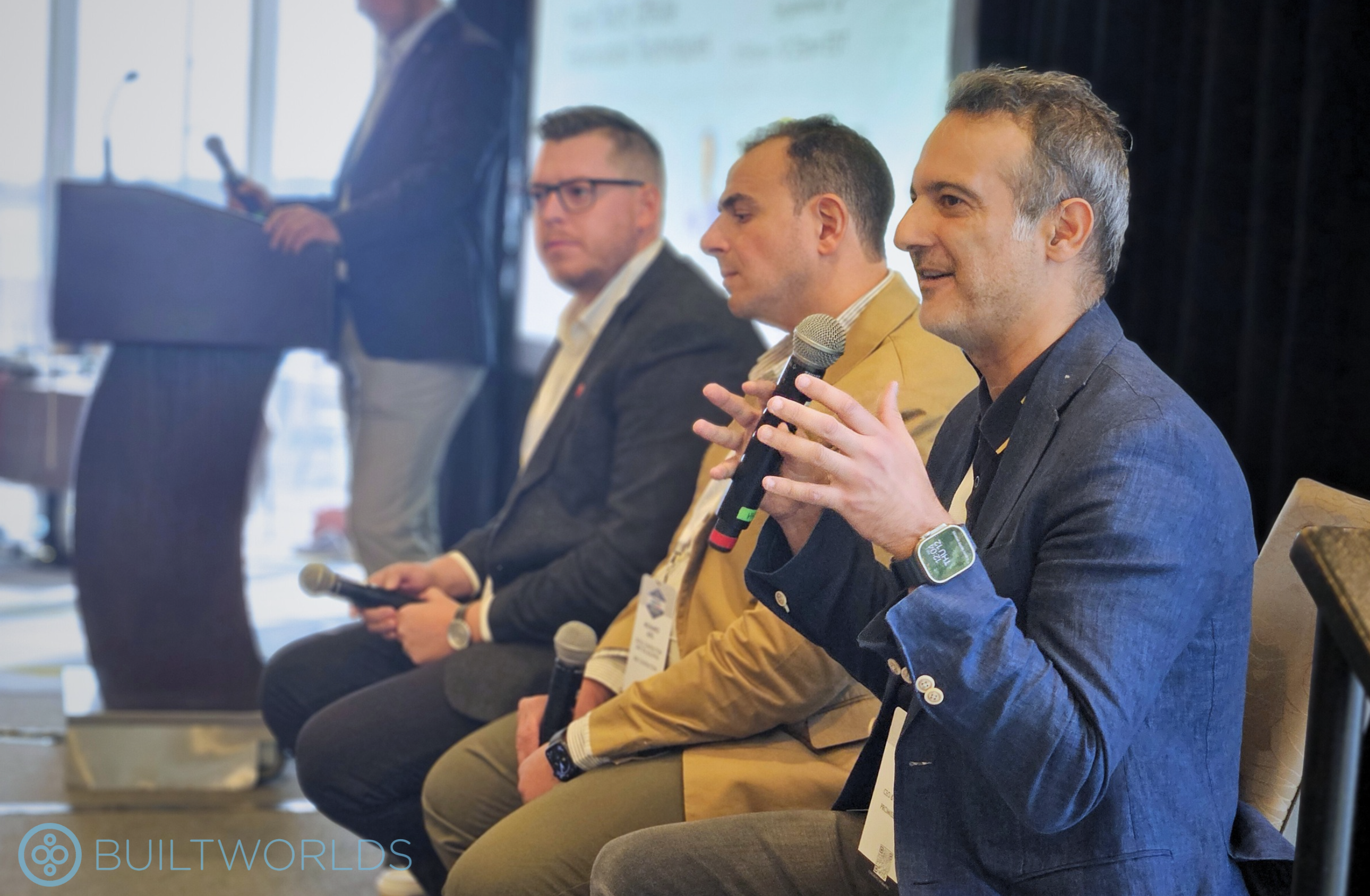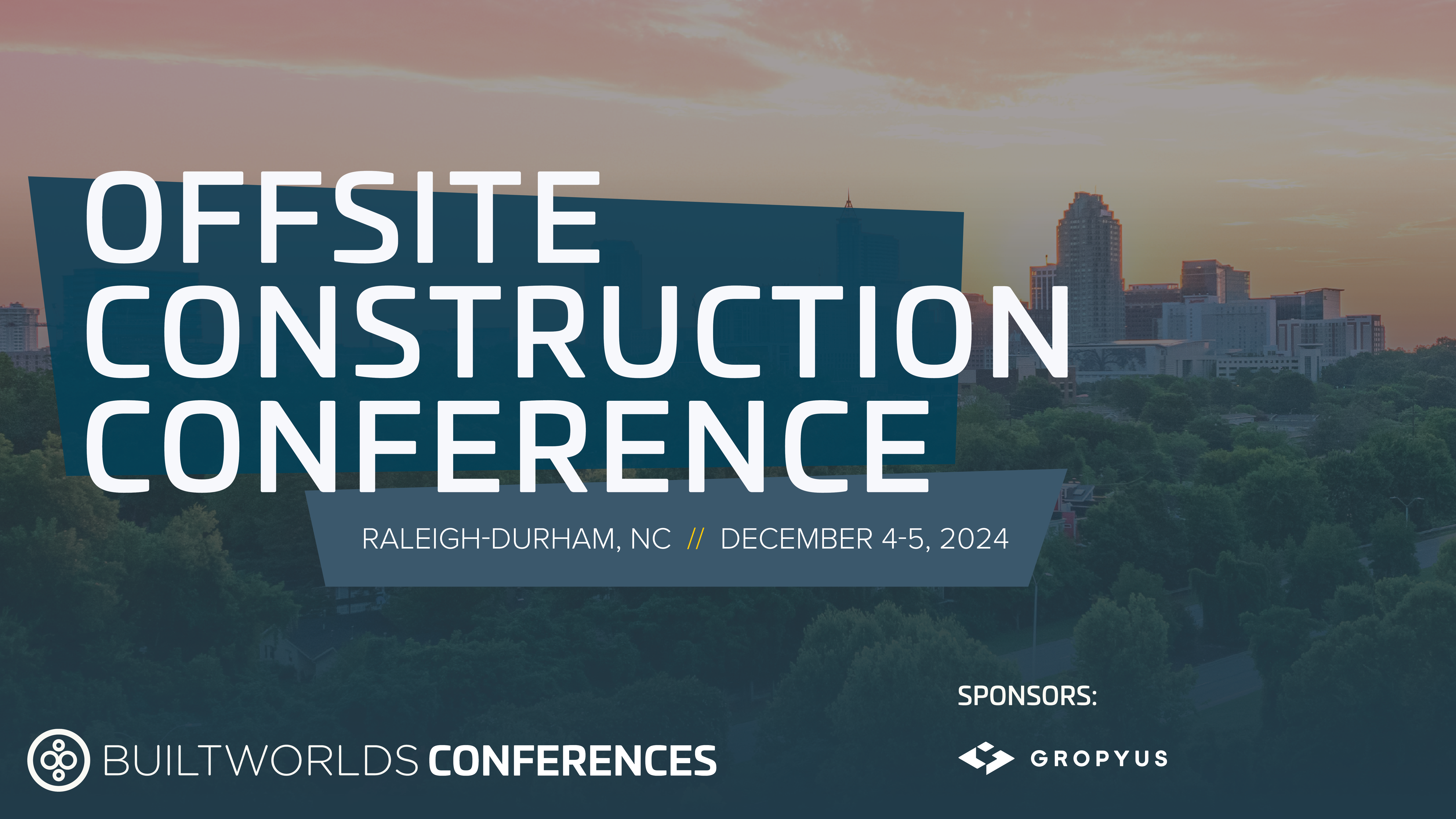
Hard-Tech: Offsite Fabrication Techniques | September 12, 2024
Continuing our post-event coverage of the 2024 Americas Summit in Toronto, Canada, we look back at one of the more highly anticipated panel sessions focused on offsite fabrication techniques. Offsite construction, generally, is poised to significantly transform the AEC industry through efficiency gains, predictable costs, safety benefits, and higher-quality products. By fabricating building components and systems in a controlled factory environment while preparations occur simultaneously on site, projects can be completed much faster than traditional construction.
To better understand the potential of offsite construction and the role of automation, robotics, and other technology in the fabrication process, BuiltWorlds enlisted the help of a general contractor, academia, and a solution provider to provide perspectives on the intricacies of offsite construction. Panelists included Mohamed Adel, Digital Construction Director, Bird Construction; Brandon Searle, Director of Innovation & Operations, UNB Off-site Construction Research Centre; and Ramtin Attar, CEO & Co-Founder, Promise Robotics.
See a few key takeaways from their discussion below!

Is A Digital Approach Needed?
Although the benefits of offsite construction are widely understood, it has not been embraced on a wide scale yet. For many groups, creating a digital roadmap is essential for effective offsite construction, particularly in prefabrication and modularization. Digital tools like Building Information Modeling (BIM) enable detailed planning and coordination across all stakeholders, ensuring that prefabricated components are accurately designed and manufactured to fit seamlessly on-site, reducing errors, rework, and material waste. Additionally, digital platforms streamline communication, logistics, and quality control, allowing for better integration of design, fabrication, and construction processes.
“We’ve been leveraging offsite construction, whether it be panelized, volumetric, or MEP prefab, for over a century…with [new] technology, there’s an opportunity to realize the benefits offsite construction can have.” Brandon Searle, Director of Innovation & Operations, UNB Off-site Construction Research Centre
This sentiment was echoed by panelists. Mohamed discussed Bird Construction's digital approach which enables them to house the entire process, from concept to handover, in a digital environment, allowing them to track data and fully simulate their projects.
Ramtin, on the other hand, likened 'offsite' to the AEC industry's shift toward more traditional manufacturing principles. By welcoming a manufacturing approach and adopting its KPIs, Attar believes we can more effectively avoid the “moving construction indoors” trope it is sometimes associated with.

The Role of Robotics & Automation
With the continued development of innovative tools and robotic solutions, the industry is reshaping how we can fabricate building components and systems. Namely, by leveraging robotics and automation to repeat tedious processes, organizations can create economies of scale, which, in turn, makes offsite construction more practical.
Beyond the economic drivers outlined above, the group considered ethical and practical narratives for offsite construction. Brandon described how universities typically focus on two things: knowledge generation and talent generation. Unfortunately, we’re not producing the type of talent needed to combat the lack of skilled labor in the AEC space—if we’re serious about industrializing construction, we need to look across academia and the trades and highlight the growing opportunity to implement technology and new ways of doing things in an antiquated industry.
Similarly, by leveraging robotics and automation, we are not exposing workers to potentially dangerous situations as we did in the past. With better lighting, weather protection, and standardized safety protocols, the risk of accidents related to falls, equipment mishandling, or adverse weather conditions is significantly reduced. Workers also face fewer dangers since tasks like assembling large components are performed with advanced machinery and under strict supervision.
For more conversations like this and to meet pioneers in the offsite construction world, join us in Raleigh-Durham for our inaugural Offsite Construction Conference on December 4-5, 2024!
Throughout the 2024 Toronto Summit, innovation took center stage, from understanding how and where legacy technology is being put to work in the greater Ontario region to exploring where emerging solutions fit into the conversation. As offsite construction and its associated technologies continue to evolve, BuiltWorlds will be your one-stop shop for critical insights driven by objective research and high-level conversations for organizations looking to effectively adopt these technologies and harness their full potential.
Ready for More?
Contact research@builtworlds.com or sales@builtworlds.com for more information on BuiltWorlds' Offsite Construction Research Track and Forum Group, which seeks to prepare our member companies for the potential of prefab and modularization, its applications in the AEC sector, and the role of startups in this period of change.





Discussion
Be the first to leave a comment.
You must be a member of the BuiltWorlds community to join the discussion.